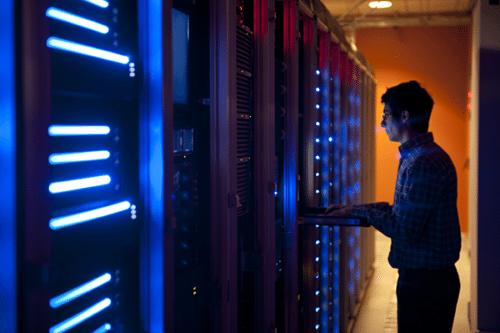 As computing demands grow, so do data centers, and with this growth comes huge amounts of heat that need to be managed efficiently. Many data centers start out as just a few racks in a server room, and over time more and more equipment is added without taking cooling factors into account, making data center HVAC even more difficult.
As computing demands grow, so do data centers, and with this growth comes huge amounts of heat that need to be managed efficiently. Many data centers start out as just a few racks in a server room, and over time more and more equipment is added without taking cooling factors into account, making data center HVAC even more difficult.
When data centers are exposed to too much heat, servers start to slow down or malfunction altogether. The same thing happens when server rooms are too cold. The ideal temperature for your data center depends on the size and amount of heat emitted, but operating within this ideal temperature range is crucial for overall performance.
There are a few different things you can do to effectively manage heat in data centers and keep your equipment fully operational.
3 Considerations for Optimized HVAC for Data Centers
To capitalize on energy efficiency opportunities, as well as maintain high performance levels in your data center, consider the following:
1. Understand HVAC Opportunities and Applications
It’s important to first understand how your building’s HVAC system can be used for data center cooling. Often times, HVAC systems cycle on and off in an effort to conserve energy for the entire building, but this can be catastrophic for the efficiency of your data center if you don’t have a means of compensating. On the other hand, your HVAC system may provide a cost-effective, convenient method of data center cooling and heat removal. Either way, it’s crucial to first understand the opportunities and limitations of your current system.
2. Remove All Unnecessary Heat Sources
Cooling data centers is a major energy expense. Removing all unnecessary sources of heat can reduce this cost and make data center cooling much easier. Heat sources can come from baseboard heaters, light bulbs, people or unused server equipment that’s still plugged in. Minimizing heat from these sources is a great way to save on energy costs.
3. Use Ventilation to Remove Hot Air
Using ventilation systems, even an existing HVAC vent, significantly reduces the amount of energy needed to cool a data center. There are many ways heat can purposely be funneled in a particular direction – such as hot-aisle/cold-aisle arrangements or using side and blanking panels – and then directed out of the room through a well-placed vent.
There are many other best practices in HVAC for data centers, but the three considerations above are some of the quickest, yet most fundamental aspects of heating and cooling server rooms.
To find cost-savings and maintain peak performance of servers, read more on HVAC for data centers.
